Chlorophyllum (previously called Lipiota) -- Lepiota Rachodes
Posted by Katie 11/7/12 - - - - - Scroll Down to See the Discussion
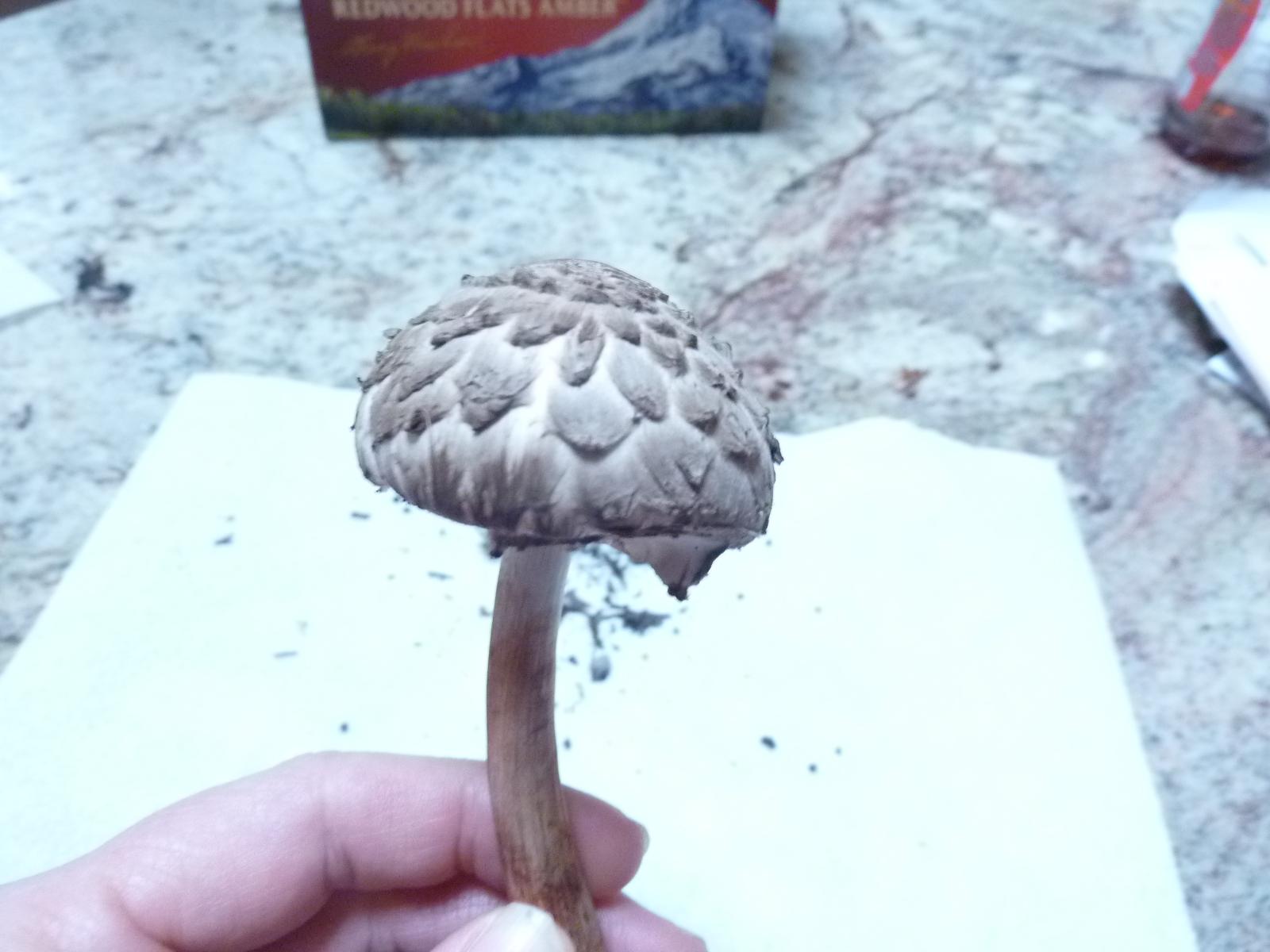

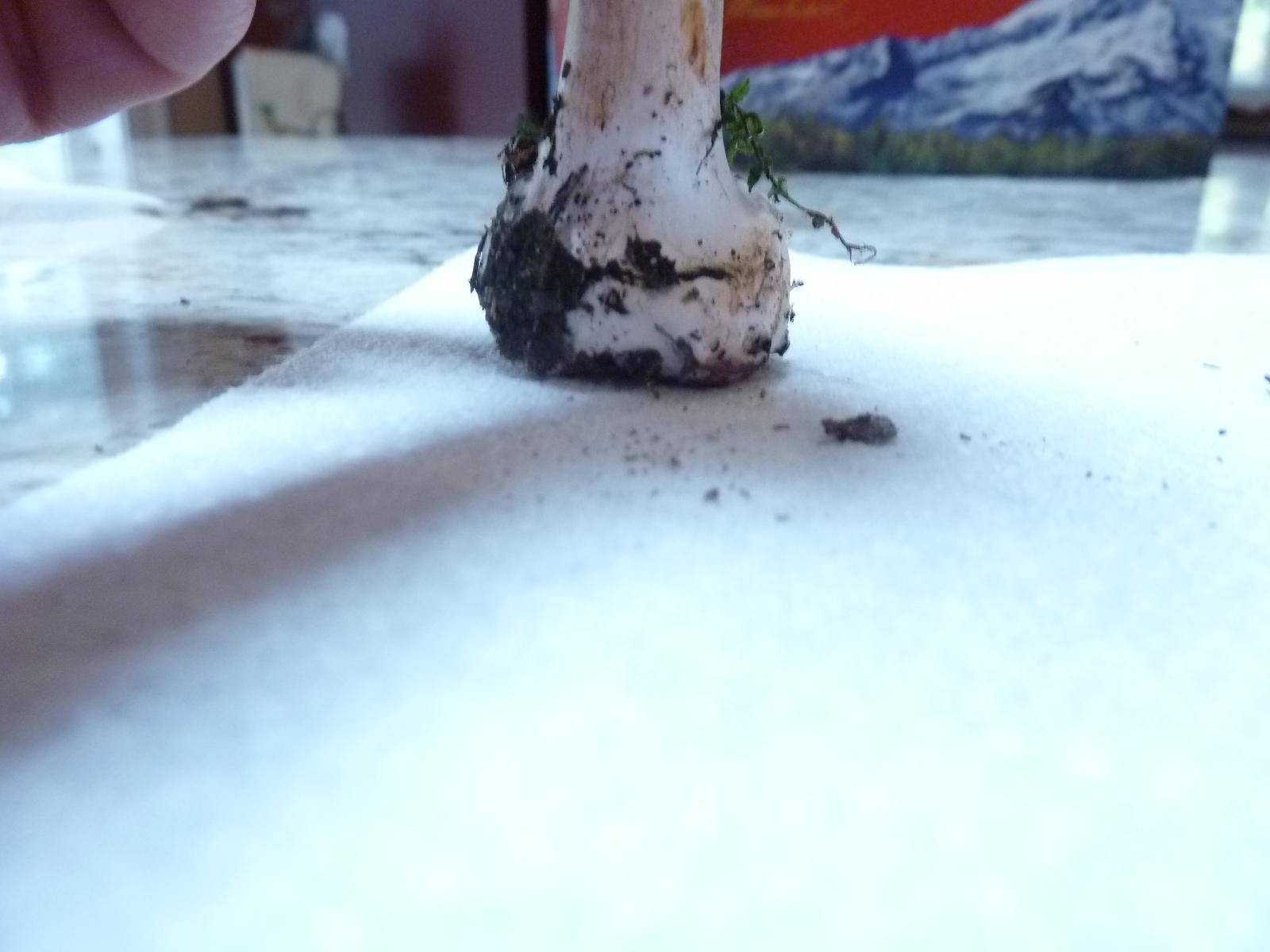
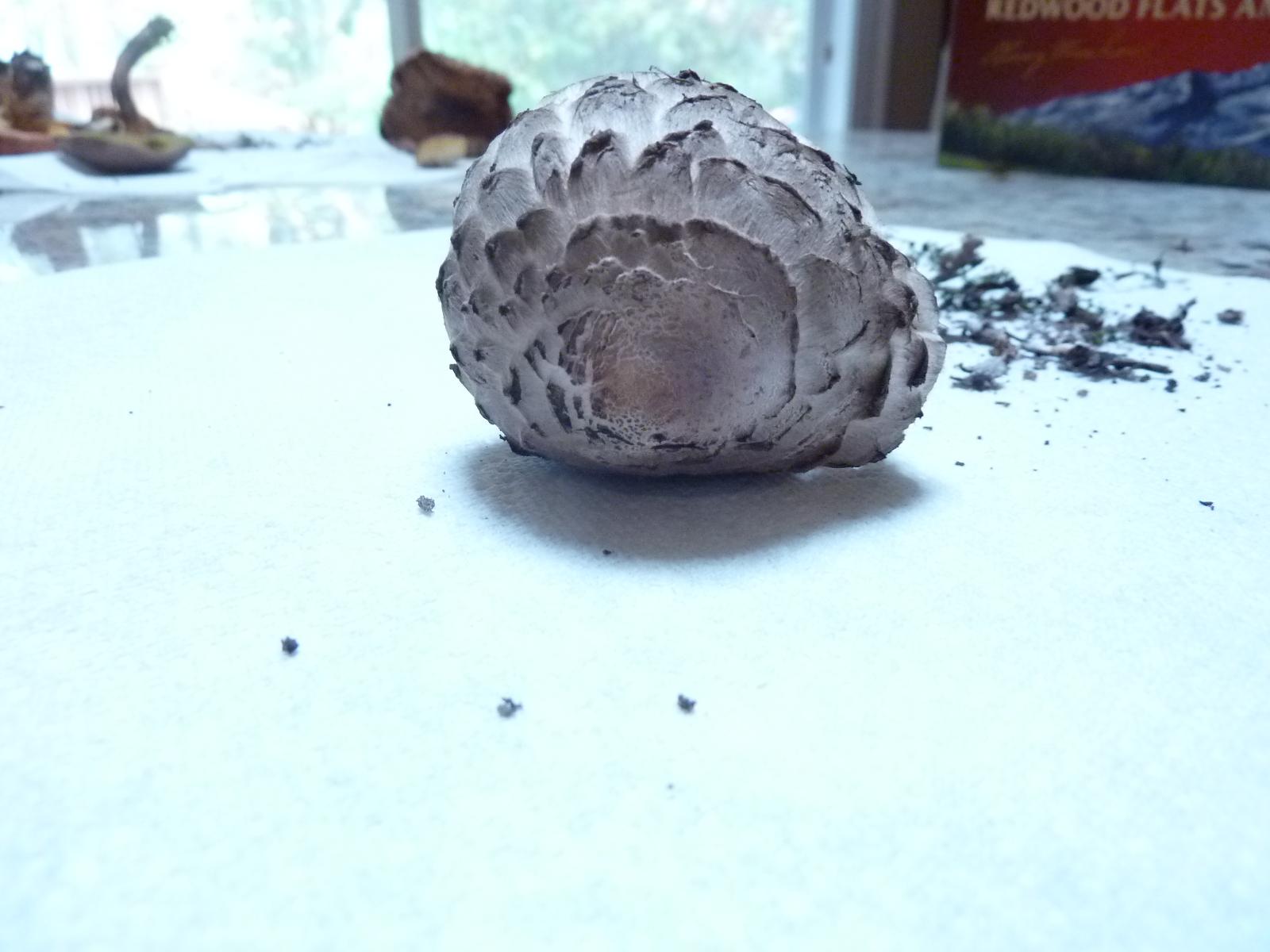
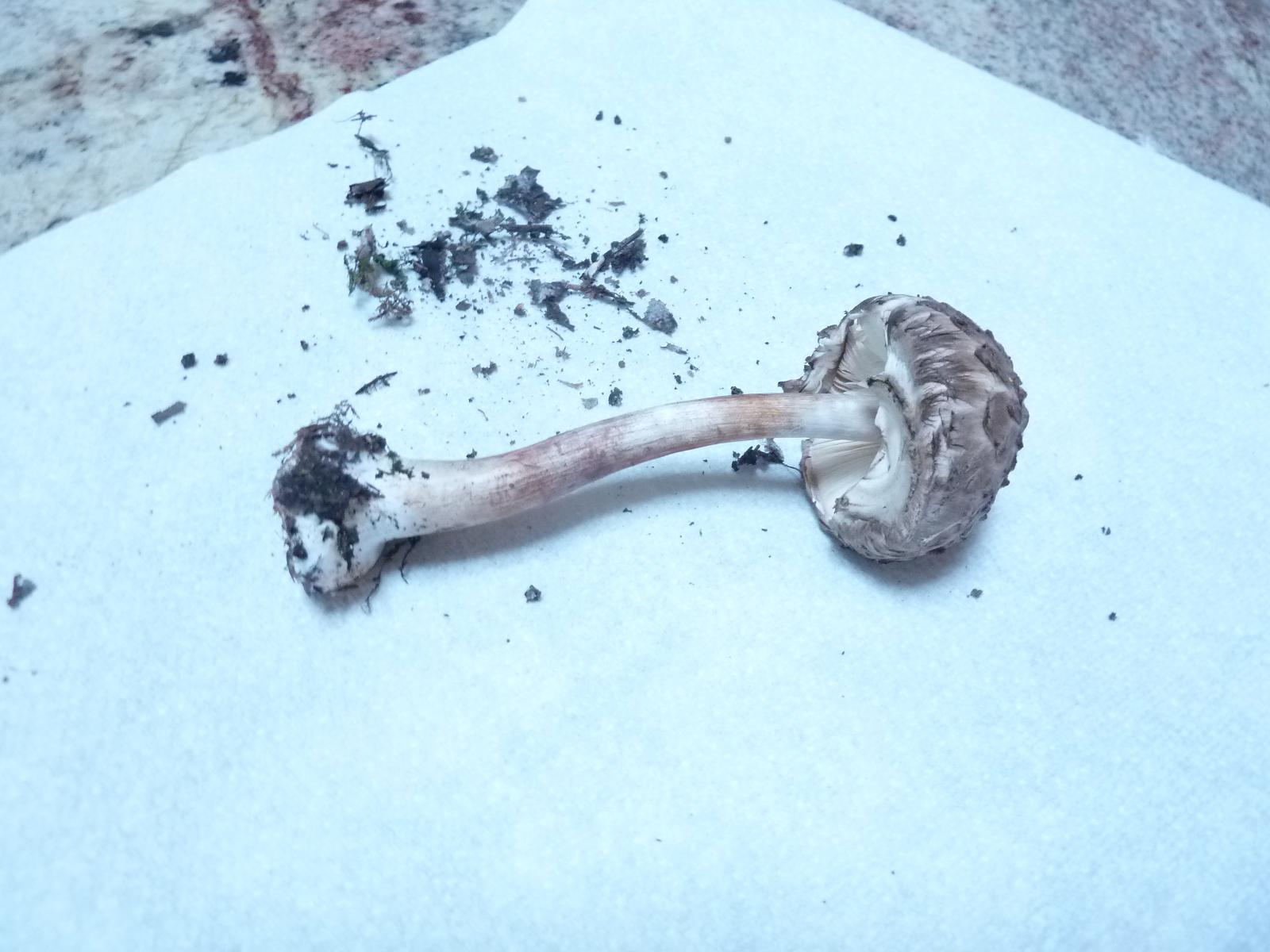
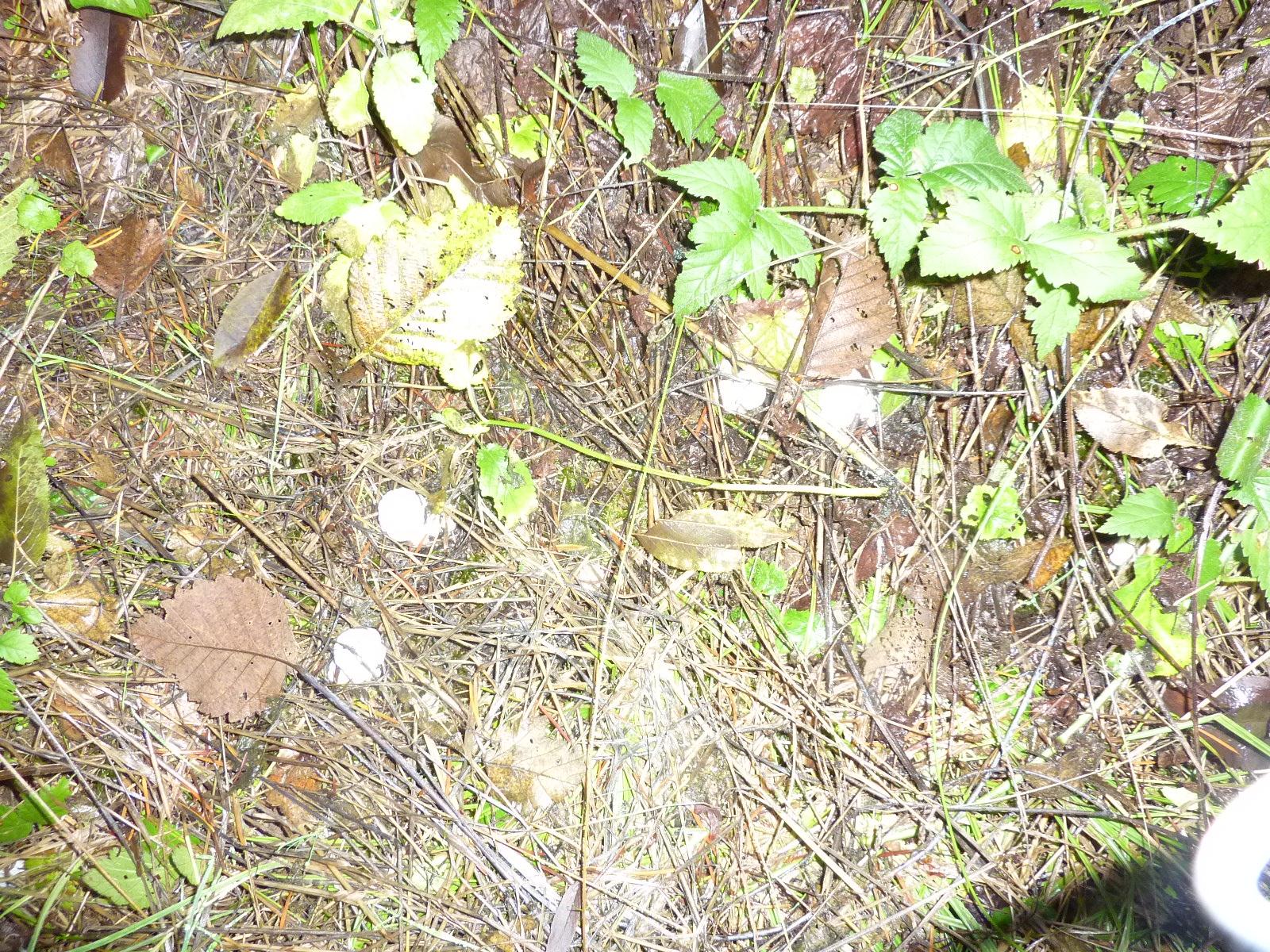
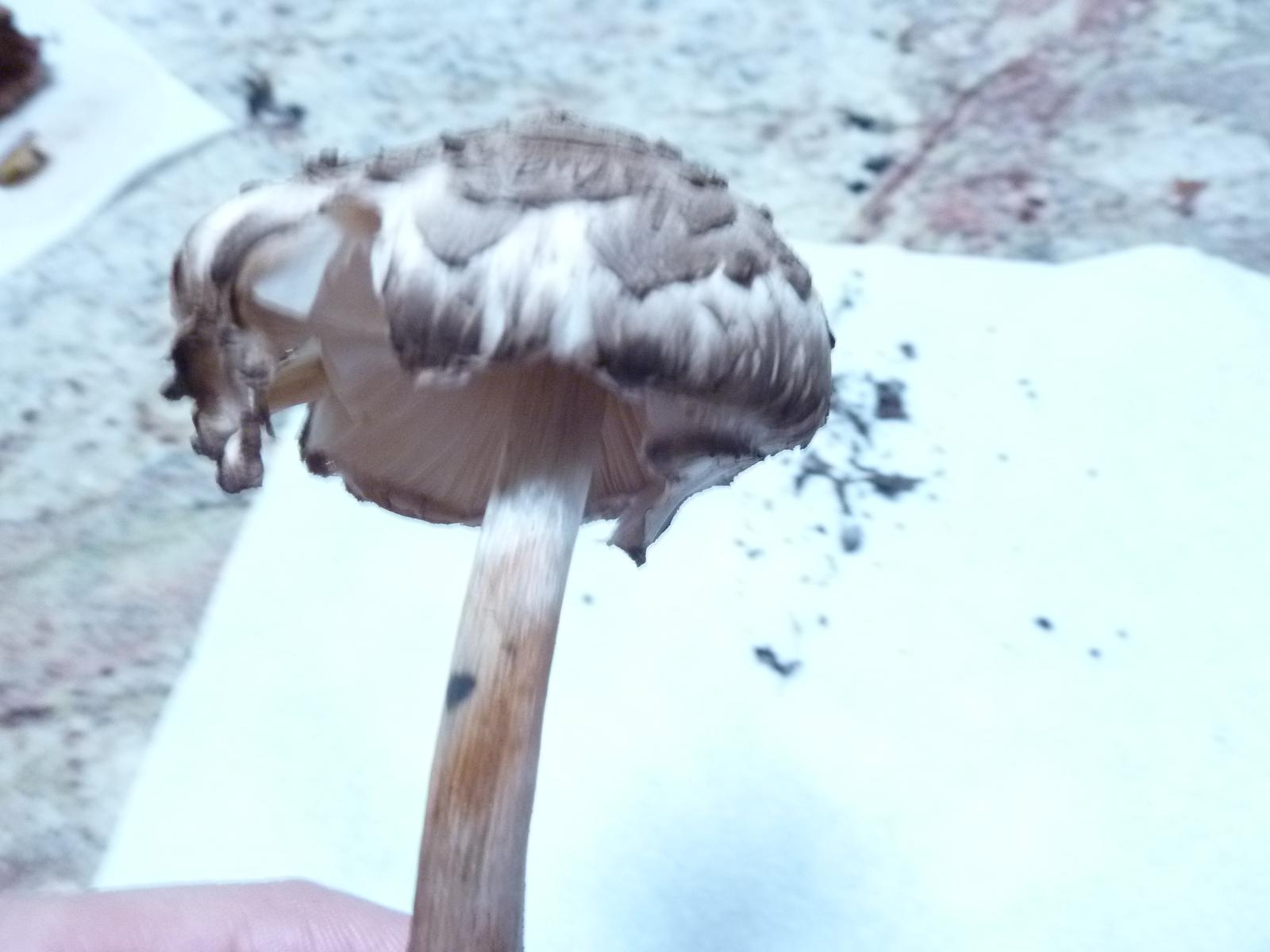
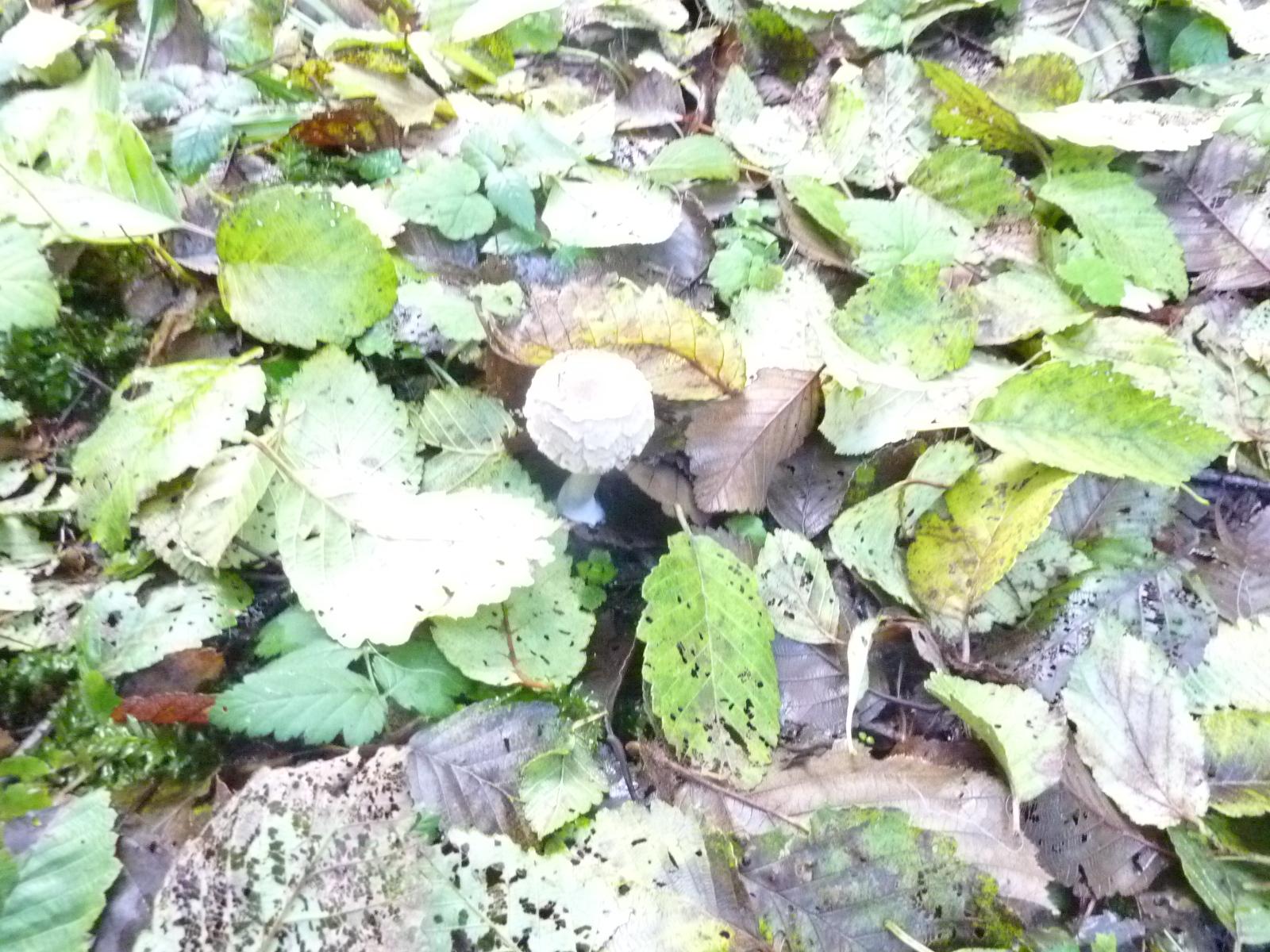
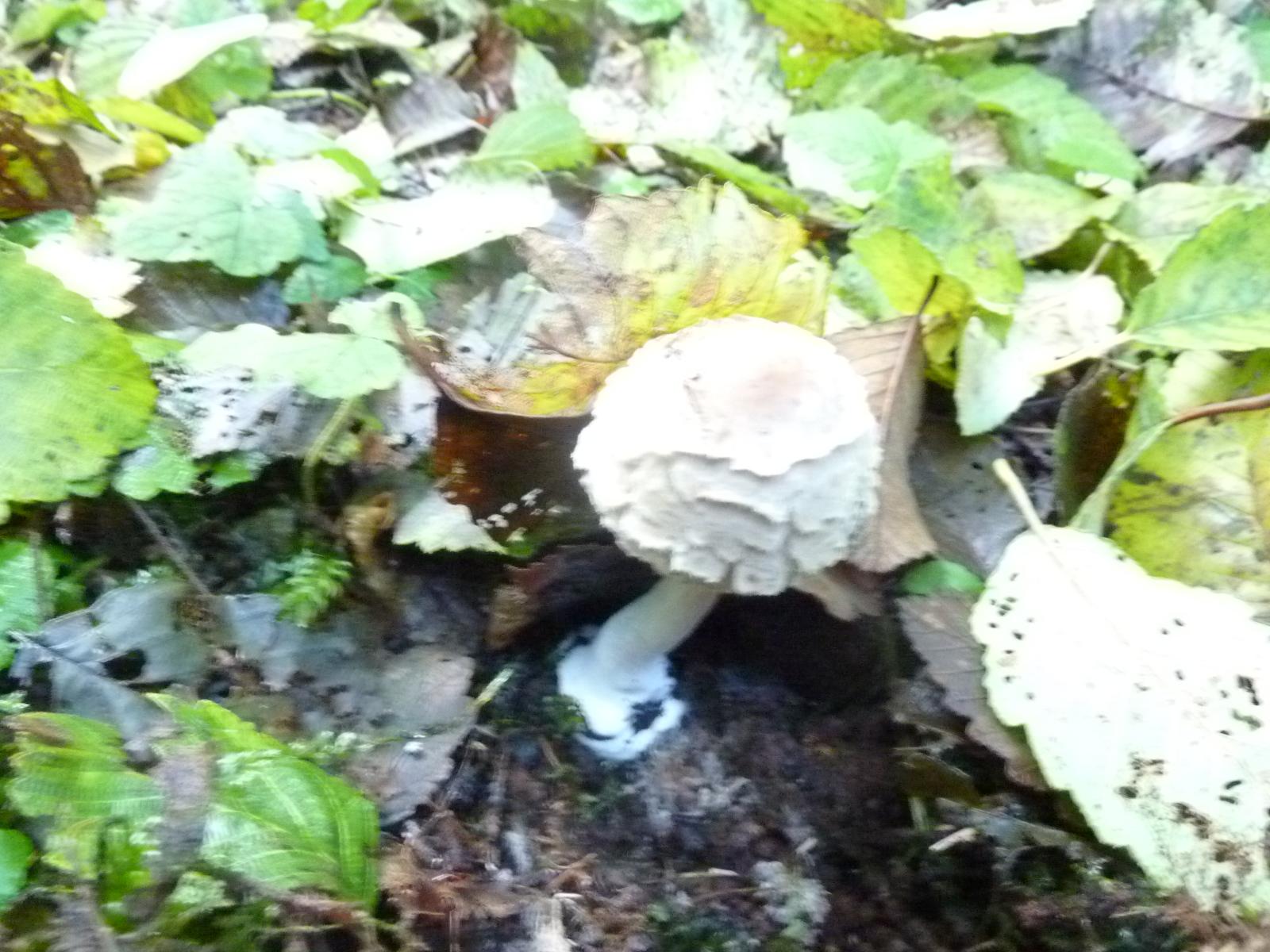
Note: Note:Chlorophyllum molybdites
(common names false parasol or green-spored parasol) is Highly poisonous.
Katie: I found some Lepiota Rachiodes among a path
by Doug Firs and other mixed woods on Chehalem Mtn.
I am sorry that the pics aren't very good.
I guess I had my camera on the wrong setting.
They are beautiful mushrooms but not that white.
White stalk and gills. Grayish to brownish scaly cap.
If anyone would like a better pic, let me know.
Thanks,
Katie: I just realized after calling this a Lepiota that they are not
called that anymore. Sorry.
Sava: Sava: This is indeed a Lepiota (in the wide sense),
most likely in the rachodes group.
But we would need sharper pictures and more detail to be able to tell what it is.
If you don't mind visiting the spot again,
I believe it would be a really good exercise.
There are three Chlorophyllum species in the rachodes group
(check http://www.svims.ca/council/Chloro.htm) that grow in the PNW.
Does your camera have a macro setting?
We'll need to see what the bulb at the bottom of the stem looks like,
and we would like to see the ring (whether it's double or not).
And the cap surface.
Thanks for posting; hope you'll get the additional info/pictures.
---------------
Katie: (later) I am sorry to revisit this again.
I can't find the older e-mails regarding this mushroom.
I have these popping up here and there on Chehalem Mtn.
center of cap solid brown hard and smooth
the rest of cap soft scaley and lighter brown.
Arora's book says on white background but the background of these are not very white.
gills white and detached
Stem long and NOT scaley.
double edged ring
Base of stalk abruptly bulbous but flat on bottom.
Thanks,
Mike P: (later) It looks just like the modern version of a Lepiota rachodes,
whatever that is called now, to me.
(I regret that I have reached momentary exhaustion with the taxonomic whitewater we now call home.
I think they're all now in Chlorophyllum -- which, if you know a little Greek makes no sense at all).
My impression is, as they age, the white background can become a little darker.
Paradoxically, very young mushrooms also can look darker (than white),
because the scaly background is not broken apart much (the cap isn't much expanded).
Handling and bad weather can also make mushrooms get darker,
especially those prone to staining (as these).
The shape of the ring IMO is quite diagnostic of this group of mushrooms.
Just my 2c. I haven't opened any reference books to check.
Click on a thumbnail below to enlarge the image






























